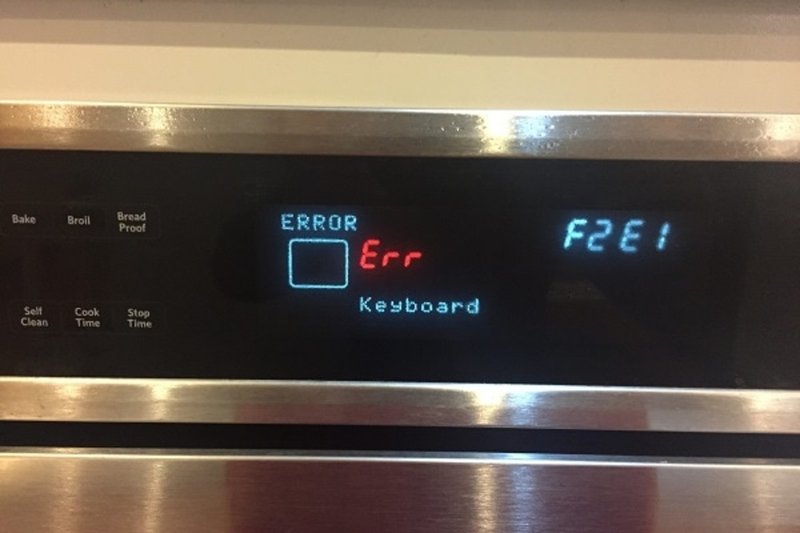
Imagine you’re driving and your dashboard lights up with a warning. You wouldn’t keep driving without checking, right? Similarly, your air conditioner is trying to communicate with you through these codes. Understanding what the E3 code means and addressing it promptly can save you from discomfort and potentially expensive repairs. So, let’s dive in and find out more about the E3 error code and what you should do about it.
What Does an E3 Error Code Mean?
The E3 error code on a GE air conditioner is essentially a message that signals a problem with the unit’s temperature sensor. Think of the sensor as the air conditioner’s thermostat—it helps maintain the desired room temperature by providing feedback to the air conditioner. When this sensor malfunctions, the unit can’t accurately regulate temperature, leading to performance issues. Just like in a car, if the engine’s temperature gauge isn’t working, you might end up driving your car too hot or too cold.
Why does this matter? Well, if your air conditioner can’t sense the room’s temperature correctly, it might overwork itself trying to cool or heat the room, leading to higher energy bills and increased wear and tear. So, while it might not seem like a big deal at first glance, leaving the E3 error unchecked could lead to bigger headaches later on. Addressing it promptly can save you money and extend the life of your appliance.
Here’s the deal: ignoring an E3 code is a bit like ignoring recurring hiccups in your car’s engine. Sure, things might seem to work okay for now, but you’re setting yourself up for a breakdown. Tackling the problem head-on ensures your air conditioner stays in peak working condition, making your home comfortable all year round.
How to Address the E3 Error Code
Okay, so you’ve seen the E3 error code flashing on your GE air conditioner. What next? First, don’t panic. Dealing with this error code is relatively straightforward, even if you’re not particularly tech-savvy. Start by turning off your air conditioner and unplugging it from the power source. This simple step can sometimes reset minor electronic issues, much like restarting a computer can solve unexpected bugs.
Next, check the unit’s temperature sensor. This component is usually located near the evaporator coil inside the unit. If you’re comfortable, you can open the unit and visually inspect the sensor to see if it’s loose, dirty, or visibly damaged. A sensor that’s out of place might not be able to read temperatures correctly, much like how a misplaced thermometer won’t give an accurate reading.
If the sensor looks okay but the error persists, it might be time to call a professional. Sure, we all like to save a buck by DIYing things, but hiring a technician ensures the problem is correctly diagnosed and fixed. Much like you’d call a mechanic for car issues beyond your expertise, a technician can handle the intricacies of an air conditioner repair.
Why Ignoring the E3 Code Isn’t Worth It
You might be thinking, “It’s just an error code, how bad could it be?” Ignoring the E3 error could lead to more than just an uncomfortable room. If the air conditioner’s temperature sensor isn’t working right, it could cause the unit to either run non-stop, trying to reach a temperature it can’t sense, or not run at all. This constant running wears out the internal parts faster and could lead to a complete breakdown.
Moreover, an air conditioner that runs inefficiently drains more electricity. Think of it like leaving a faucet running—it’s not just wasteful, it’s expensive. Over time, what might seem like a minor issue can lead to seriously high energy bills. Plus, if the unit does overheat due to the malfunctioning sensor, it might trip the circuit breaker, causing temporary blackouts.
Ignoring this issue could also mean a loss of warranty support. Many manufacturers require proof that you’ve promptly addressed any error codes or issues. Failing to do so might void your warranty, leaving you responsible for all repair costs. Therefore, tackling the E3 error code ensures you’re not only keeping your unit running smoothly but also protecting your investment.
Next Steps and Preventative Tips
If you’ve managed to resolve the E3 error code, you might be wondering what you can do to prevent it from happening again. Regular maintenance is key. This includes cleaning the air filters every month, especially during the summer when the unit is working hard. Dirty filters can lead to a myriad of problems, including reduced efficiency and unnecessary strain on the unit.
Additionally, regularly check that the temperature sensor and other components are clean and unobstructed. Dust and debris can interfere with the proper functioning of these parts, much like trying to breathe through a clogged nose. Scheduling an annual professional check-up for your air conditioner can also spot potential issues before they become bigger problems.
In conclusion, while it might be tempting to brush off a little error code, tackling it head-on can save you stress and money in the long run. By understanding the E3 error code and addressing it promptly, you’re ensuring that your home remains comfortable and your air conditioner stays in tip-top shape. Remember, preventative care is always easier and cheaper than repairs!